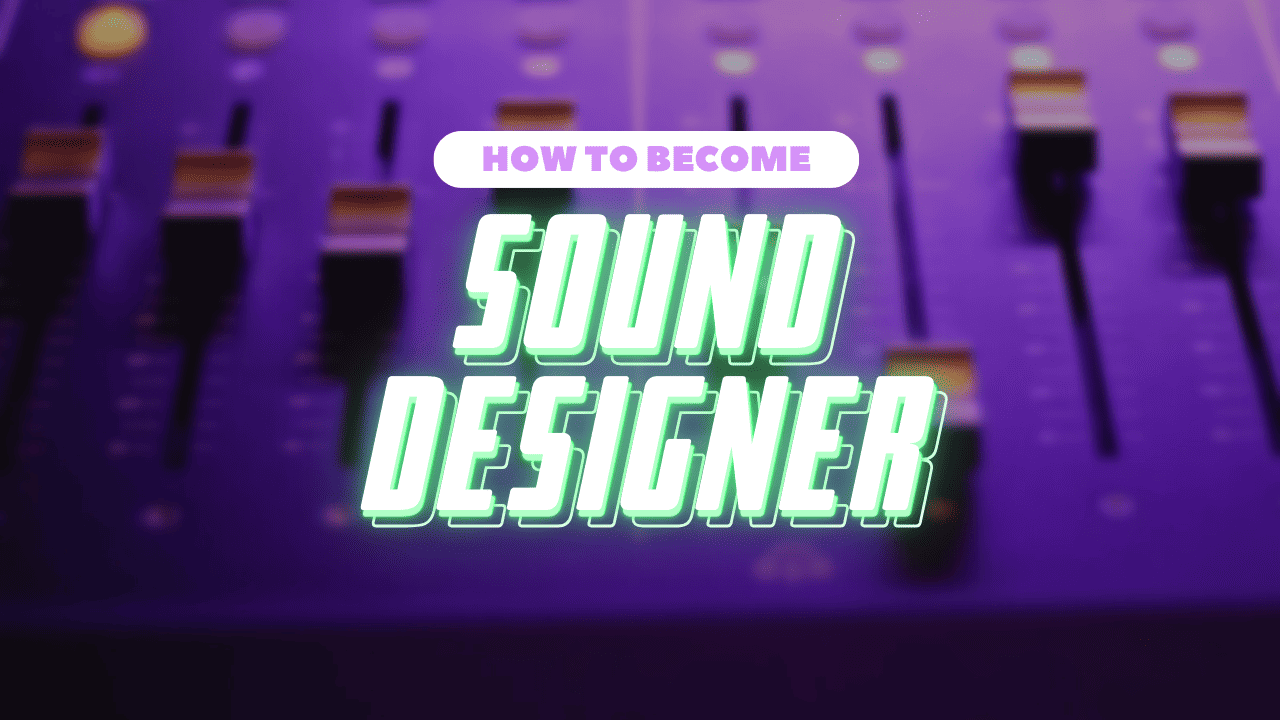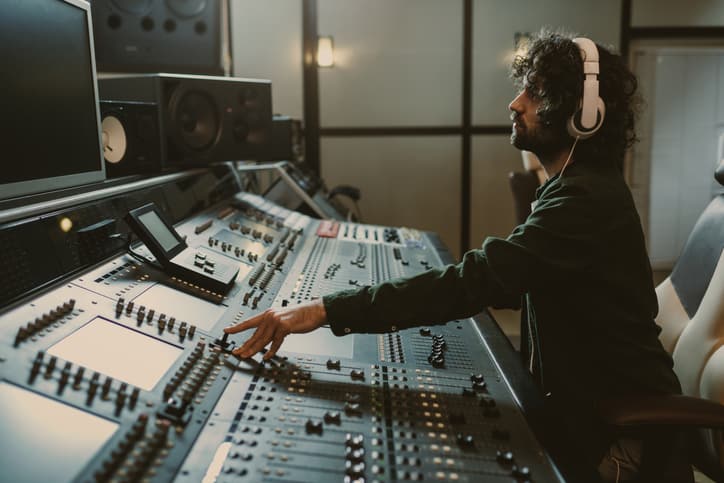Sound is all around us, shaping our experiences in movies, games, and more. Sound designers are the artists behind these auditory wonders, creating emotion and meaning. Discover the world of a sound designer: from film to video games, there are many paths to explore. In this article, we’ll delve into the fundamentals of becoming a sound designer, essential skills, job roles, and potential opportunities in this captivating field.
Explore the work of renowned sound designers, get insights into salaries, and find valuable tips for your sound design journey
What is a Sound Designer?
Sound design is all about making media like movies, TV shows, video games, and theater better by creating and tweaking sound. Sound designers work on things like music, talking, sound effects, and special sounds.
In movies, sound design is super important because it makes the movie world feel real and exciting. It’s like magic – they use tricks like editing and mixing to make sure sounds match what we see and make the story more interesting.
In the world of theater, sound design is like creating a special atmosphere for the audience. It helps us feel like we’re right there in the story.
Sound designers work closely with directors, actors, and other creative people to make sure sounds fit the story.
To be a great sound designer, you must be good with technical stuff (like using sound software) and creative thinking. You also need to understand music and be able to come up with cool sound ideas to make things more exciting.
Becoming a Sound Designer: Basic Path
If you’re keen on pursuing a career in sound design, here are steps to set you on the right track.
Skill Development
To embark on your sound design journey, honing your technical and creative skills is paramount. Begin by delving into the fundamentals of sound design, including music composition, sound editing, and mixing.
There are a wealth of online resources, tutorials, and courses that can aid in skill development.
Craft a Portfolio
To catch the eye of potential clients or employers, having a portfolio is a must. One method to create your portfolio involves crafting sound effects (SFX) and soundtracks for short films, animations, or video games.
You can also reach out to local theaters or student film projects to offer your skills and bolster your portfolio.
Expand Your Network
Establishing relationships within the field is crucial for opening doors.
Participate in industry gatherings, join online communities, and engage with fellow sound designers and media experts on social media.
Find Entry-Level Jobs or Internships
Starting as an intern or in an entry-level position is an excellent way to gain hands-on experience and learn from seasoned professionals in the field.
Numerous media production companies, studios, and theaters provide internships and entry-level opportunities for budding sound designers.
Continuous Learning
As the media production landscape evolves, staying abreast of the latest sound design trends and technologies is vital.
Participate in workshops, attend conferences, and enroll in courses to keep pace with emerging techniques and software.
By adhering to these guidelines, you can cultivate your expertise, craft a robust portfolio, and solidify your position as a sound design professional in the industry.
Key Roles of a Sound Designer
Sound designers play a pivotal role in crafting immersive media encounters. Below are the four primary responsibilities of a sound designer:
1. Crafting Sound Effects: Sound designers curate and generate sound effects that breathe life into a project’s visual elements. This encompasses the creation of original sounds, the modification of existing ones, and the seamless integration of these sounds into the project.
2. Sound Mixing: Sound mixing involves the art of harmonizing diverse audio tracks to create a unified and well-balanced soundscape. Sound designers, with their acute attention to detail, fine-tune volume, balance, and frequency levels to ensure each element is audibly cohesive.
3. Music Composition: Beyond sound effects, sound designers may compose original music or collaborate with composers to produce a score that complements visuals and intensifies emotional impact.
4. Collaboration with the Creative Team: Sound designers closely collaborate with fellow creative professionals such as directors, producers, and editors. Their aim is to align sound with the project’s vision and objectives. Effective communication of ideas, openness to feedback, and willingness to make revisions are vital skills.
How to Start Your Sound Designer Path
Initiating your career as a sound designer may seem challenging, but you can kickstart your journey in this thrilling domain with these steps.
Grasp the Fundamentals
Before delving into sound design, grasp the basics of audio production. Get acquainted with digital audio workstations (DAWs), plugins, and commonly used sound design tools. Numerous online courses and tutorials offer foundational audio production knowledge.
Invest in Tools and Software
Selecting the right tools and software is pivotal for effective sound design. Invest in a quality DAW, plugins, and software to realize your sonic visions.
Explore Sound Design Resources
Enhance your sound design skills with readily available resources. Dive into online courses, tutorials, and forums to bolster your expertise. Sample libraries and sound effects packs can also broaden your sonic palette.
By following these steps, you can commence your journey and craft distinctive, captivating sounds across various media.



